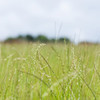For the first time, scientists have measured the movements of high-flying insects in the skies over southern England – and found that about 3.5 trillion migrate over the region every year.
For the first time, scientists have measured the movements of high-flying insects in the skies over southern England – and found that about 3.5 trillion migrate over the region every year.
Scientists recorded movement above radar sites in southern England and found large seasonal differences, with mass migrations of insects generally going northwards in spring and southwards in autumn. Until now, radar studies have measured migrations of relatively few nocturnal species of agricultural pests, and no study previously examined the vast numbers of daytime migrants. Researchers from the University of Exeter and Rothamsted Research, which receives strategic funding from the BBSRC, captured the movement of 3,200 tons of biomass, using specialised radar techniques. This movement is more than seven times the mass of the 30 million songbirds which depart the UK for Africa each autumn. It is also the equivalent of about 20,000 flying reindeer. The study is published today in the journal Science.
Dr Jason Chapman, of the Centre for Ecology and Conservation at the University of Exeter’s Penryn Campus in Cornwall, said: “Insect bodies are rich in nutrients and the importance of these movements is underappreciated.”
“If the densities observed over southern UK are extrapolated to the airspace above all continental landmasses, high-altitude insect migration represents the most important annual animal movement in ecosystems on land, comparable to the most significant oceanic migrations.”
Although the origin and destination of each insect was not recorded, evidence from previous research suggests many will have been travelling to and from the UK over the English Channel and North Sea.
The scientists recorded movement above radar sites in southern England and found large seasonal differences, with mass migrations of insects generally going northwards in spring and southwards in autumn.
Until now, radar studies have measured migrations of relatively few nocturnal species of agricultural pests, and no study previously examined the vast numbers of daytime migrants.
The study found seasonal variations from year to year, but overall the net northward spring movements of larger insects were almost exactly cancelled out by net southward movements in autumn over the 10-year research period.
Dr Gao Hu, a visiting scholar with Dr Chapman from Nanjing Agricultural University, China, led the analyses of the radar data.
He said: “Many of the insects we studied provide important ecological services which are essential for maintaining healthy ecosystems, such as pollination, predation of crop pests and providing food for insectivorous birds and bats.”
Co-author Dr Ka S (Jason) Lim, of the Radar Entomology Unit of the AgroEcology Department at Rothamsted Research, said migratory insects can serve as indicators of global environmental condition.
“Animal migration, especially in insects, is a very complex behaviour which takes millions of year to evolve and is very sensitive to climatic condition,” he said.
“Global climatic change could cause decline of many species, but equally other highly adaptable species thrive and become agricultural crop pests.”
The study focussed on insects flying more than 150 metres above the ground, using radar for larger insects (10mg and over) and netting samples for smaller ones.
The paper, published in the journal Science, is entitled: “Mass seasonal bioflows of high-flying insect migrants”.
Publication
Contacts
Notes to Editors
About the University of Exeter
The University of Exeter is a Russell Group university that combines world-class research with very high levels of student satisfaction. Exeter has over 21,000 students and is one of the global top 100 universities according to the Times Higher Education World University Rankings 2015-16, positioned 93rd. Exeter is also ranked 7th in The Times and The Sunday Times Good University Guide 2016 and 11th in the Guardian University Guide 2017. In the 2014 Research Excellence Framework (REF), the University ranked 16th nationally, with 98% of its research rated as being of international quality. Exeter was named The Times and The Sunday Times Sports University of the Year 2015-16, in recognition of excellence in performance, education and research. Exeter was The Sunday Times University of the Year 2012-13.
The University has four campuses. The Streatham and St Luke’s campuses are in Exeter and there are two campuses in Cornwall, Penryn and Truro. In a pioneering arrangement in the UK, the Penryn Campus is jointly owned and managed with Falmouth University. At the campus, University of Exeter students can study programmes in the following areas: Animal Behaviour, Conservation Biology and Ecology, English, Environmental Science, Evolutionary Biology, Geography, Geology, History, Human Sciences, Marine Biology, Mining and Minerals Engineering, Politics and International Relations, Renewable Energy and Zoology.
The University will launch its flagship Living Systems Institute in 2016, a world-class, interdisciplinary research community that will revolutionise the diagnosis and treatment of diseases. This follows recent investments of more than £350 million worth of new facilities across its campuses in recent years; including landmark new student services centres - the Forum in Exeter and The Exchange on the Penryn Campus in Cornwall, together with world-class new facilities for Biosciences, the Business School and the Environment and Sustainability Institute.






